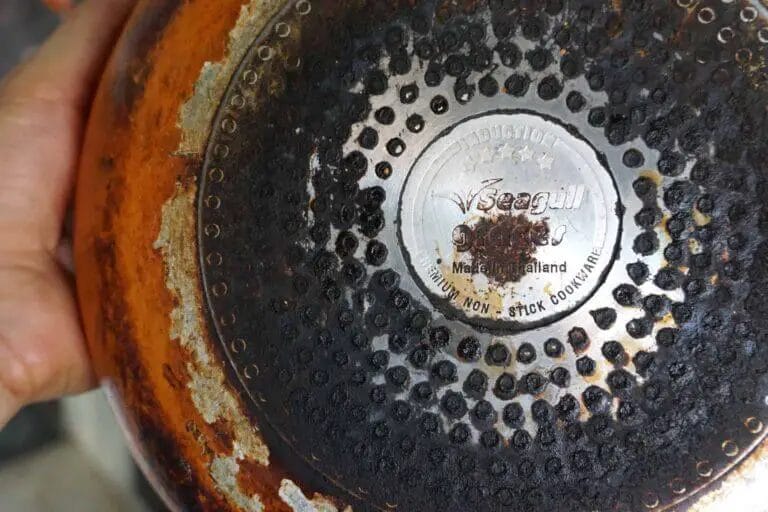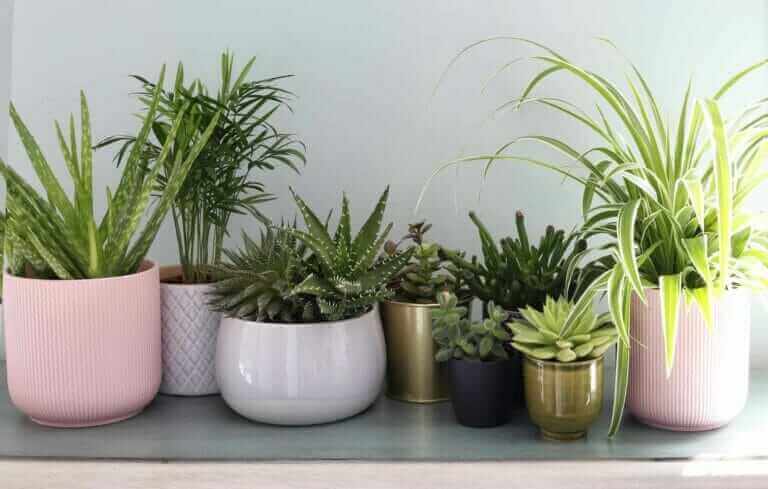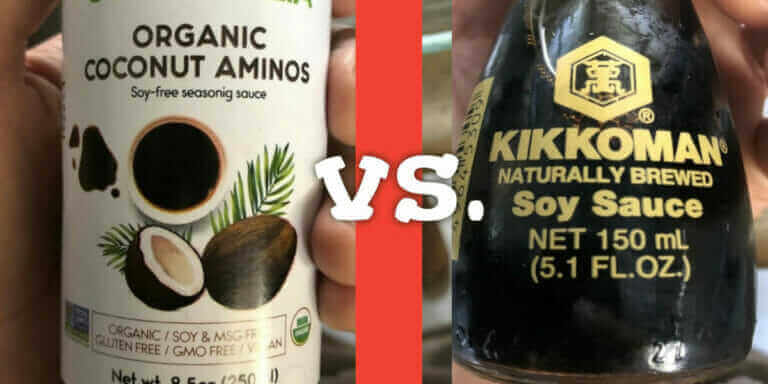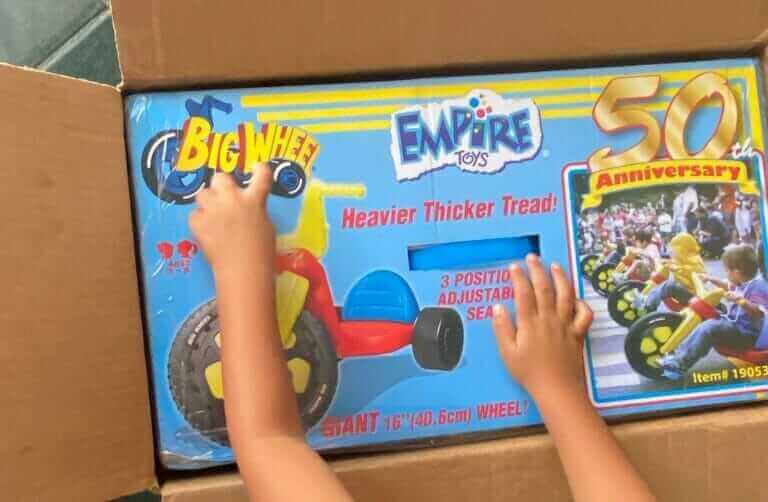Sproutingfam.com is supported by its readers. If you purchase through a link on my site, I may earn a commission. Learn more
How To Store Water For Emergencies (Long-Term Storage Tips)
Learning how to store water for emergencies is something that can only help to know about. It can help you and those around you. In 2019, around the time of writing this water storage tips article, there was a huge 7.0 earthquake in Alaska that made me consider learning all the best methods of storing water long term.
The damage was extensive and cut off vital supply lines possibly until spring.
That means the deep freeze winter was that much colder for many people.
The federal government helps in times of disaster and need, but you can’t rely on that in times of distress. Luckily, people in Alaska know to prepare for the worst and I bet a good percentage of them have stored water as well. This is a good example of why we must know how to store water for emergencies.
Most people are not prepared like Alaskans. If you’re not prepared for massive environmental disasters and you’re looking to be, water storage is a good place to start.
How To Store Water For Emergencies
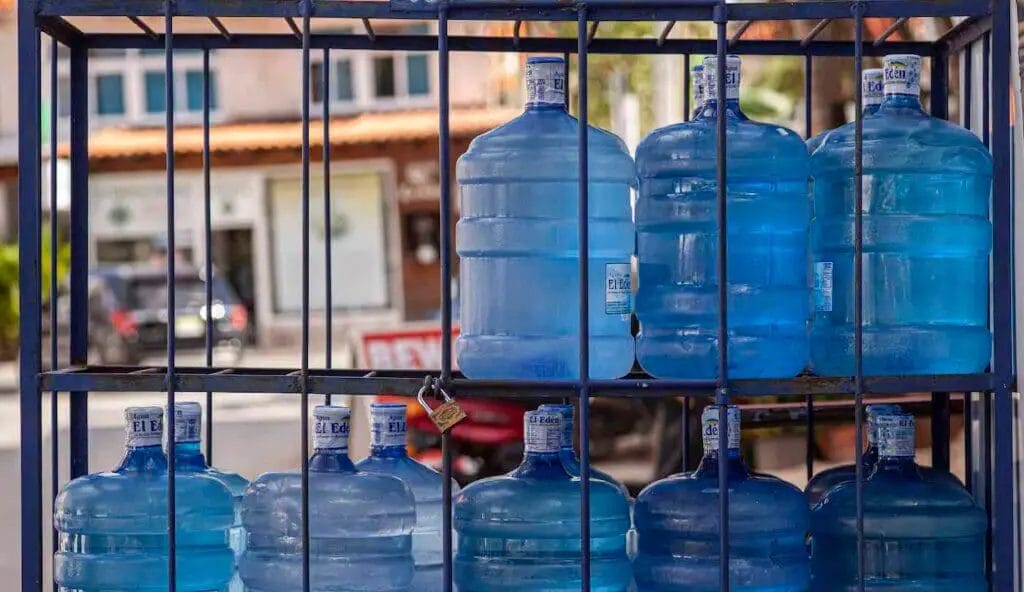
No matter where you live in the world, it’s good to have stored water for emergency purposes.
You can store enough to last you a good few days. Or with some extra prep, you can easily store drinkable water for up to 5 years. And even longer.
If a person requires around a gallon per day, you can do the math to see how much it would take to store 6 month’s worth.
55 gallon jugs can take a person almost 2 full months. These big barrels are the most popular method for storing water for serious “preppers” i.e. people with good heads on their shoulders. These food-grade plastic jugs are stackable and come in smaller sizes than 55 gallons.
Barrels made specifically as water storage containers come with sealed holes on top that connect to a water hose and sometimes a filter too. These make taking out water easy without risking contamination.
Short Term Water Storage (No-Bleach, Natural Methods)
These are short term natural water storage methods.
If you’re storing water for a short time before switching it out, chlorine may be overkill.
Store Bottled Purified Water
If you’re chlorine-sensitive, store-bought water bottles or purified water alone can be stored for up to 6 months without worry to drink afterwards. No chlorine necessary to purify. This is good for short term water storage.
Some say you can store these plastic water bottles for 2 years or longer, but the fact is that their 2-year expiration date is due to the plastic bottles that begin to leach chemicals into the water at this point.
However, I don’t trust that 2-year mark considering the bottles were probably left in the sun or possibly some form of excessive heat on their way to the retail store.
Water lasts as long as you need it to. Uncontaminated water does not go bad. If you have somehow managed to store uncontaminated water, then you may not even need to know how to store water for emergencies.
The most pure water would be a distilled or reverse osmosis water. City water is pre-treated and will already contain water-preserving chlorine in it.
However, recycled city water brings with it undetected leftovers from flushed pharmaceuticals residuals and more…
A sanitized jug or barrel should be used and it should be kept in a cool area to avoid algae growth.
To add oxygen back into old flat water, shaking it first or pouring it between cups a few times, aerates it and helps bring back its natural water-taste.
Like with using nothing at all, you’ll want to store the water for 6 months to 1 year maximum before switching the water out for new.
Long Term Water Storage (~5 Years)
When it comes to long term survival and knowing how to store water, you can only hold so many 55 gallon barrels.
Finding a natural spring or a well to access water long term would eventually be necessary. Learning how to store water for emergencies also includes being aware of your area’s waterways and geographic qualities for long term living without public water companies.
Storing Drinking Water With Bleach
With some bleach added, stored water can last upwards of 5 years.
Bleach plays an integral role in learning how to store water for emergencies long term.
Here’s a usage guideline for when storing water long term.
| Drinking Water Volume | Regular Bleach |
|---|---|
| 1 Quart | 2 drops |
| 1 Gallon | 1/8 teaspoon (8 drops) |
| 5 Gallons | 1/2 teaspoon |
| 10 Gallons | 1 teaspoon |
| 50 Gallons | 5 teaspoons |
If storing water longer than a year, regular unscented Clorox Bleach is used to combat any potential contaminants. Bleach is what helps kill algae growth.
It’s important that you use regular bleach and NOT scented bleach or bleach products with additives. You don’t want to put a cleaning solution in your drinking water.
Regular bleach disintegrates over time. It helps sustain your water and keep it drinkable. Chlorinating water with bleach is one way to safely store water for at least up to 5 years. You just need to test your water to maintain the proper levels of chlorine.
How To Test Your Long Term Storage Water
Usually the best source is water from your tap at home, which already has been treated with enough chlorine to destroy harmful pathogens – typically 1-ppm chlorine as tested with a swimming pool chlorine test kit. You might consider increasing this to 4-ppm for long term storage to be assured of a maximum safe level for drinking (according to the EPA) to eliminate and prohibit growth of pathogens.
– Modern Survival Blog
A pool water testing kit can be picked up at your local pool store.
There are also drinking water test kits available on Amazon, like these:
- 𝗖𝗢𝗠𝗣𝗥𝗘𝗛𝗘𝗡𝗦𝗜𝗩𝗘 𝗪𝗔𝗧𝗘𝗥 𝗧𝗘𝗦𝗧 𝗞𝗜𝗧 – Test your water for 16 parameters, including pH, hardness, chlorine, lead, iron, copper, nitrate, and nitrite. Ensure lead-free and pH-safe drinking water with our all-inclusive water testing kit. Includes testing tube and dropper for easy sample collection, providing accurate and reliable results for peace of mind.
- 𝗥𝗘𝗟𝗜𝗔𝗕𝗟𝗘 𝗔𝗡𝗗 𝗙𝗔𝗦𝗧 𝗥𝗘𝗦𝗨𝗟𝗧𝗦 – Our 16 in 1 drinking water test kit delivers accurate and reliable results in just 2 minutes. With its user-friendly design, it’s effortless and easy to use, making it ideal for school projects and any water testing needs.
- 𝗩𝗘𝗥𝗦𝗔𝗧𝗜𝗟𝗘 𝗪𝗔𝗧𝗘𝗥 𝗧𝗘𝗦𝗧𝗜𝗡𝗚 – Our comprehensive water test kit allows you to test every water source in your home. From drinking water to well water and tap water, pool water and spa water, hot tub water, and aquarium water, our kit covers it all. Ensure the quality and safety of your water with ease and confidence.
- 𝗦𝗧𝗥𝗘𝗦𝗦-𝗙𝗥𝗘𝗘 𝗦𝗘𝗣𝗘𝗥𝗔𝗧𝗘𝗗 𝗣𝗔𝗖𝗞𝗔𝗚𝗜𝗡𝗚 – Our drinking water test kit comes with 100 premium testing strips, carefully packed in 10 sealable bags. Each bag has a dry agent to preserve the quality of the strips for longer. You can use the strips at your own convenience and pace. The strips in an open package are recommended to be used within 90 days. Unopened packages can last up to two years. With separate bagging, you have the flexibility to test your water accurately without feeling rushed to finish all 100 strips within 90 days.
- 𝗣𝗘𝗔𝗖𝗘 𝗢𝗙 𝗠𝗜𝗡𝗗 𝗔𝗦𝗦𝗨𝗥𝗔𝗡𝗖𝗘 – Our water test kit is designed to give you the confidence and peace of mind you deserve. It tests for 16 different contaminants, keeping your family safe and ensuring the well-being of your loved ones. Trust in our testing kit to provide the assurance you need for a healthy and worry-free environment.
Long Term Water Storage Treatment
If the unfortunate event occurs that your stored water has become tainted, there are ways to purify it in order to make it drinkable again.
Here are five ways to purify questionable water after long-term storage.
1. Boiling The Water
Boiling water continuously for five minutes destroys most pathogens.
2. Using Bleach
10 drops per gallon is a good average amount of regular bleach to add.
3. Using Iodine
They sell iodine tablets to purify water. Iodine for purifying water is not as powerful or effective as bleach for disinfecting potentially contaminated water.
4. Using Distillation & Filtration
Boil water, collect its newly purified condensed water that comes from the vapor. There are a few different ways to collect distilled water. Distilled water machines may be a good option.
5. Using Reverse Osmosis
Reverse osmosis (RO) water combined with an activated carbon filtration system can remove total dissolved solids (TDS), turbidity, asbestos, lead, and heavy metals. While RO water can also get rid of pathogens, you should not count on water treatments for RO to purify contaminated water because that’s not what they’re designed to do. But they take out heavy metals which is a big plus. You can boil RO water to help kill pathogens.
Can Vinegar Disinfect Stored Water?
Vinegar is not a chemical. It can be ingested. It’s a natural household cleaner with antibacterial properties. And it’s also a key ingredient in salad dressings and countless other liquid solutions.
But can vinegar purify water?
Vinegar is said to be able to purify water because it’s highly acidic and this could potentially break down pathogens.
But if you’re looking for a chlorine alternative for water purification, before treating water with vinegar, it’s worth digging into this topic deeper first.
Inspectapedia on the effectiveness of vinegar as well as other potential disinfectants:
Watch out: The effectiveness of vinegar as a disinfectant has been widely studied. Vinegar treatments cannot be easily relied-upon to adequately disinfect all of the kinds of pathogens that may be in drinking water, particularly parasitic cysts One thing experts cite is the importance of temperature in the disinfection procedure
More water disinfectants to note from Inspectapedia include
…ozone, chlorine dioxide, iodine, mixed oxidants electrochemically generated from brine, and halogenated resins. Ozone has been successfully used for water purification but with high contact times.
More on how to purify water
We have another blog post on how to purify water you have stored. Or if you just want to make sure it’s drinkable after pulling it out of storage.
Extreme Weather Water Storage
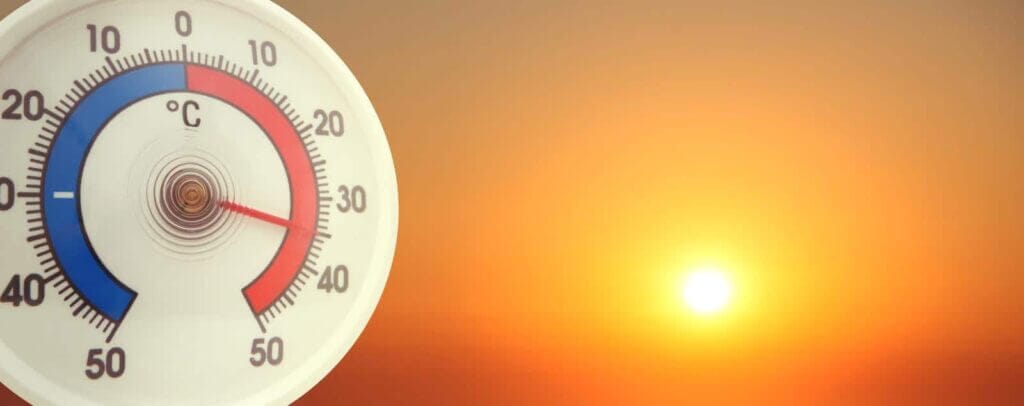
Storing Water In Freezing Temperatures.
Water’s freezing point starts below 32 degrees Fahrenheit (32°F) or 0 degrees Celsius (0°C). This type of weather is cold enough to freeze a 55 gallon barrel.
One way to keep your water unfrozen is to dig a hole big enough to fit as many 55 gallon barrels as you need stored. Concrete the bottom and walls and place gallons on wooden pallets for air circulation. This also prevents any potential chemical reactions from the cement touching the plastic containers.
You’d then enclose the hole with a door and insulating material like silver tarp. This helps keep light and any weather out, and the added insulation would help keep the stored water from freezing.
If freezing is a concern, leave at least 12 inches space to for expansion. 6 months is not a long term solution but it would be enough to hold over any temporary water shutoff.
Storing Water In Excessive Heat
This same method of storing underground works great for environments with excessive heat. If you can’t dig a hole to store your water and your area gets extremely hot, then you must keep the water away from direct sunlight at the very least.
Tree shade is always coolest. And so are earthen buildings.
If you can’t go underground, you can bring the mud above ground and keep your water here. Adobe, rammed earth and cob can all make a big difference in hot climates.
Water Storage Containers
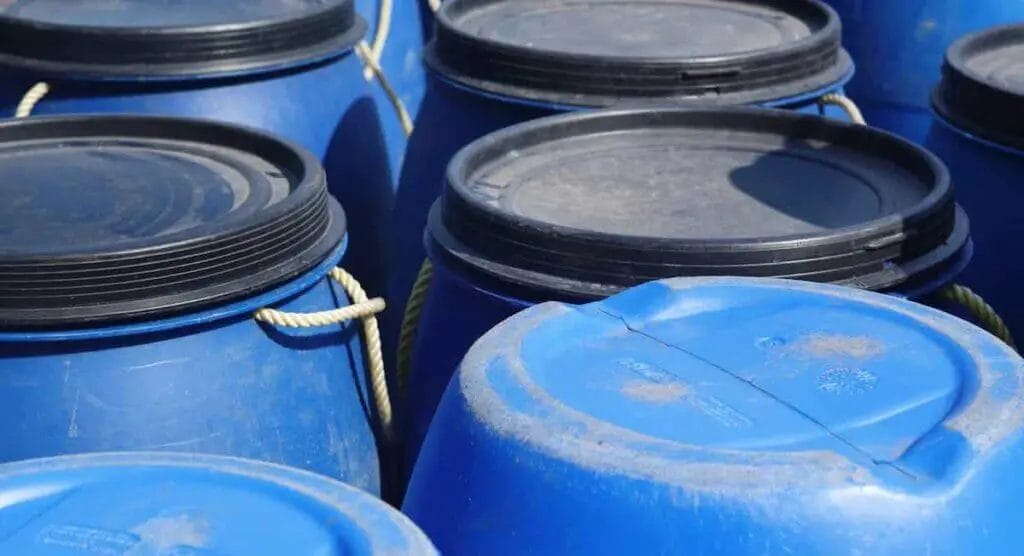
Knowing how to store water is all good and fun, but you need to have proper containers. Water does not go bad. It can be stored for years as long as it remains clear of contaminants.
Unused food-grade plastic containers (HDPE Plastic #2) is the best of the plastic material for storing water. Glass and steel work as well, with some obvious limitations.
All have risks associated with them, but if replacing semi-annually (not allowing enough time for leaching into the water), food-grade HDPE jugs should pose the least risk.
If you’re storing in 55 gallon jugs, it is recommended to combine the smaller stackable 2.5 gallon jugs to help with emergency mobility.
Glass couldn’t store as much. Steel is tougher. But chlorine and steel don’t mix.
You can find the popular blue 55 gallon HDPE water container barrels and their smaller versions. These are all stackable and can come in 5 gallon and 2.5 gallon jugs.
The upside to these containers is that they’re directly geared at storing liquids. Many have sealed openings and a water filter with hose attachment. This makes it easier to keep your water uncontaminated.
DIY Water Storage Container: This post from the Art of Manliness blog shares how to make your own secured and sealed water barrel to store away.
Types Of Water Storage Containers
- Copper vessels have been used to store water.
- Clay pots can store water.
- Aluminum containers.
- Glass containers
- Mylar bags
Storing water in mylar bags like the waterBOB is a perfect way to save water for an emergency, last minute. If an emergency situation strikes, you can fill the waterBOB mylar bag inside your bathtub and it will hold you over for a while and be protected from contamination.
Filling the tub without the mylar bag means contamination from the tub itself or from stuff falling into the open water, making it not ideal for drinking water.
More Home Water Storage Tips
Here’s a a few more tips on how to store water for emergencies, starting with a good breakdown video by City Prepping.
Well water: You should have a generator and some gas stored. If electricity goes down, you need a way to pull from your well. If you have stored water, this will give you time to figure that out in the case of it happening.
- How to clean your water well with bleach:
Gas powered generator: You never know when SHTF, and even if you’re storing water for a power outage, it’s good to have stored water ready to pour and drink.
And if you have a well, it’s good to have a generator pump and gas to run it.
Two additional methods to note are “water storing crystals” and storing water with silver coins.
Are You Storing Water For Emergencies?
Prepping for a disaster is never a bad idea. From learning how to store water for emergencies, to how to purify water or filter water encountered in a desperate time of need, WATER should be the FIRST subject of preparation to master.
Our bodies are about 75% water. Water can sustain life much longer than food ever can.
When researching this topic of long term water storage, one thing I learned was that many suggest to store the city tap waters. This makes sense because its been treated and already has the proper chlorine in it that helps sustain it for a long time, but at the same time it also has added fluoride and runoff from everyone’s pharmaceuticals flushed down the toilet and into the waterways that gets recycled and treated to be sent right back out to us. I think it’s better to chlorinate purified water that you know is not treated recycled sewage water.
Whether you believe the weatherman on what’s going on with our weather today or not, you owe it to yourself and/or family, pets included, to have a lot of water stored for future safeguarding.
A full six months worth of water storage on hand at all times is a good goal. This gives you enough time to weather out whatever environmental disaster you face.
It’s best to be confident knowing you’re prepared than in not thinking anything can happen to you.
At the end of the day it’s up to you whether you trust you’ll be protected or not.
We hope you enjoyed the article and that it helped you learn how to store water for emergencies. Let us know if you have any comments, corrections or suggestions! You can post in the comments below or contact us anytime.
Additional Water Storage Resources:
- Informative comment section on this Modern Survival Blog article
- Emergency Disinfection of Drinking Water from the EPA.gov website
NEXT UP: 14 Indoor Air Pollution Tips, Plus Hidden Toxins To Avoid
Last update on 2024-07-27 / Affiliate links / Images from Amazon Product Advertising API




